It seemed like a good idea at the time: With a four-day vacation over New Year's, why not head off to the North Alps in search of ptarmigans, Japan's quintessential birds of its loftiest heights.
Over the last 10 years or more — as my free time has evolved into an odyssey of two-day hikes in the North, Central and South Alps from late spring until late fall — I've spent many solitary hours happily wandering the trails among Jonen, Hakuba, Yarigatake, Hodaka and Norikura, to name just a few 3,000-odd-meter peaks, in hopes of meeting members of this species.
Through rain, fog, typhoons, on beautiful summer days or frigid late-autumn ones, through fantastic sunrises and awesome sunsets, I've hiked countless kilometers and, most of the time, have succeeded in seeing these astonishing, grouselike birds that somehow manage to live year-round above about 2,750 meters.
But for birdwatchers, more is better, and some days' sightings have reached double figures. My record, though, is 30 in as many hours around "holy" 3,015-meter Mount Tate in the Hida Mountains of Toyama Prefecture at the northern limit of their range in Japan, which extends down through Nagano, Yamanashi, Gifu and Shizuoka prefectures.
Such memories apart, as my New Year's jaunt to remote reaches of Nagano Prefecture approached, I became ever more mindful of my very limited experience of winter hiking at altitude — and of the risk of an accident, such as when I slid and tumbled down a steep mountainside in 2011. Consequently, the kit I put together included new 10-point crampons, an ice pick, spats to keep powder snow out of my boots, a windproof and waterproof jacket and overpants, an additional lightweight down jacket and snow pants — and fleece sweaters, thermal underwear, gloves, neck warmers and a hat. In short, everything I could think of to stay safe while keeping the warmth in and the cold out.
And cold it would likely be on Mount Tsubakuro, my 2,763-meter goal in the North Alps beyond the city of Matsumoto. An online site was predicting heavy snow and temperatures down to a bone-chilling minus-25 degrees — even without the chill factor from 70-kph winds gusting to 90 kph.
Several times I considered chickening out; but it was my goal to climb high in search of Rock Ptarmigans (Lagopus muta japonica), as I'd only ever seen them once before in their clean, almost formal snow-white winter plumage. And so the challenge was on!
When D-Day finally came round, I took a bus from Tokyo to Matsumoto, a 30-minute train ride to Hotaka Station and then a taxi for the final few kilometers to the gates across the closed road to Nakafusa Onsen.
The nonstop 14-km hike along the winding, snow- and ice-covered mountain road to the onsen, which is the trailhead for Mount Tsubakuro, took exactly three hours. After a well-earned rest, I readied myself for the long, slow climb up to Enzan-so (Japanese only), the only mountain hut open in the Japan Alps at that time of year.
By late afternoon, after hiking more than 5 km in driving snow and gale-force winds, I arrived there to a warm welcome from the staff. As Enzan-so is the only alpine hut open over the Christmas-New Year's period, several other hardy souls were there, including 15 on a hiking tour and several members of a university mountaineering club who were actually camping, no less!
On the way, as I scaled the final steep ridge to Enzan-so in thigh-deep snow, I separately encountered two ptarmigans plowing their way through it as more came down all around. But, after carrying a heavy backpack for eight hours, I was too tired to even attempt to take photographs, and my only goal right then was to get out of the unabating wind. As they disappeared into the whiteness, I vowed to look for them on the morrow instead.
The following day, though, despite spending several hours looking for them, my efforts came to nought as I was thwarted by the gusting wind and a grim blizzard in which I didn't catch even a fleeting glance of any wildlife at all.
In Japan, ptarmigans are known as raichō — which means "thunderbirds." That's because, well before anyone hiked up into the mountains or built huts there, few had ever dared venture into the unknown 3,000-meter ranges forming Honshu's backbone. Yet in the summer months, the noise from thunderstorms, which often suddenly form above the ridges and valleys, could be heard by the farmers and others in villages far below — a noise they attributed to this bird that few, if any, had ever seen.
Japanese law now designates the ptarmigan as a natural monument (tennenkinenbutsu), and the species is afforded total protection. So, as there is no hunting, and most of the areas where the birds live are also in national parks, apart from a few roads, parking lots, hotels and mountain huts, their habitat remains basically in its natural state. In Gifu, too, they enjoy additional cachet as the designated prefectural bird.
Due to their confiding nature, ptarmigans can be highly photogenic, and over the years I've taken several thousand pictures of them. As they are also, of all the wild birds in Japan, perhaps the most trusting of humans, it is not unusual to be held up on a trail by one or two of them, or by a mother and chicks. The chicks are basically fearless, and although they do not actually jump over you or onto you, several times I've had them come to within just a few centimeters as I have sat quietly observing them. Sometimes, too, they have even walked under my legs as they've been going about their business of finding juicy insects such as grasshoppers or beetles to nourish their fast-growing bodies.
One of my most treasured ptarmigan experiences — and also one of the strangest — took place on the scree-covered flanks of Japan's third-highest peak, 3,189-meter Mount Oku-Hodaka overlooking Kamikochi in Nagano Prefecture.
Early one chill and bright mid-November morning, in very quiet surroundings long before the sun had risen high enough to light the cold valley below, I found a pair of ptarmigans sitting motionless among dried grass stalks and boulders. The male was perched atop a small rock and, during the two hours or so that I stayed with them, taking photographs and just quietly observing, he never actually moved his body. Occasionally, his head would move just a little as he scanned the skies for predators such as hawks or eagles — or he would move his eyes. But all that time, his body remained frozen in the same position.
Then, after having taken at least 100 photographs, I stretched out my fingers. Although I was only 50 cm or so away, the bird never moved. I edged my fingers closer. Still he was motionless. Then closer ... and closer — until I could actually stroke his feathered legs. Still he stayed there, unflinching, and even allowed me to stroke his back!
Although I've had several close encounters with this species, that morning's events will be forever etched into my memory.
Another unforgettable meeting occurred near the hut that sits atop Mount Otensho, on the well-used "Alps-Ginza" trail between the Enzan-so hut and 2,857-meter Mount Jonen.
On the day of a typhoon, I'd climbed up from Nakafusa Onsen, passed by Enzan-so and hiked as far as another hut just below the 2,922-meter summit of Mount Otensho. As darkness closed in around the peaks, I heard the "peeping"' calls of chicks, and I was able to locate a female and her brood of three among boulders near the hut.
Early the following morning — which dawned fine and sunny — I found them again not far from where I'd left them in the evening.
As I followed slowly behind, observing their feeding habits and taking a few notes, the protective female, always alert for danger, jumped up onto a rock to scan for predators — myself quite obviously not included.
Then, from just a couple of meters away, I was able to take several photographs of her surveying her domain with Mount Yari's mighty 3,026-meter spear soaring toward the heavens in the background.
For me, it was the perfect picture.
With the Enzan-so hut set to open from April 26, and the others gradually following suit in May as the snow melts, this year's "ptarmigan season" is right around the corner. For anyone interested in seeing them, two places are quite easily accessible: one is the Murodo Plateau on Mount Tate; the other is in the Tatamidaira area of 3,026-meter Mount Norikura. For finding your way to and around the mountains, this site (in English) may be helpful: japanhike.wordpress.com.



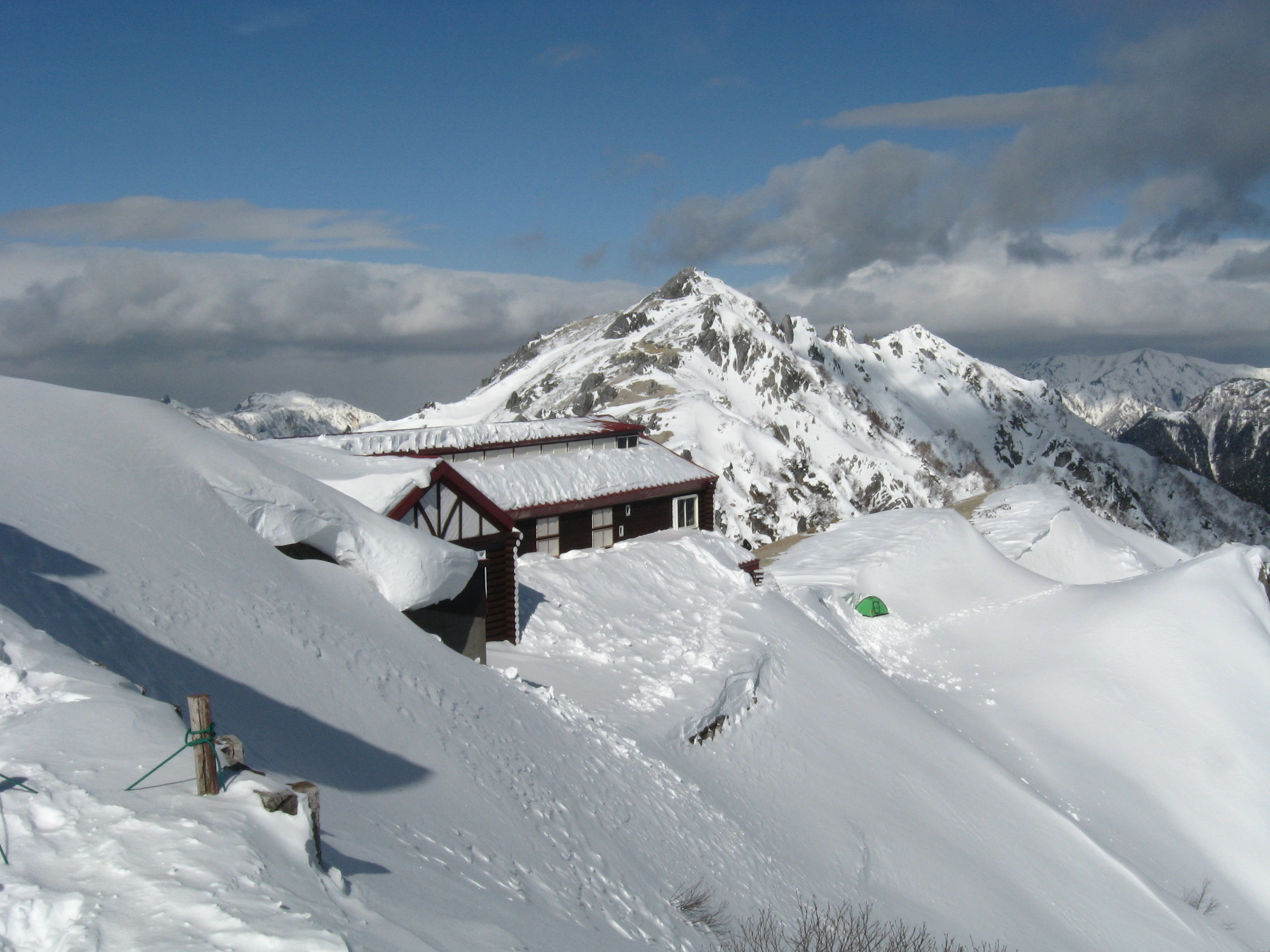
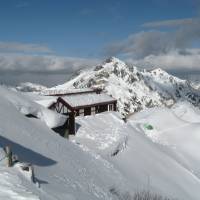
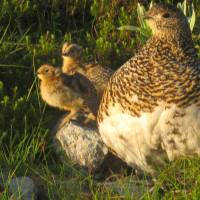
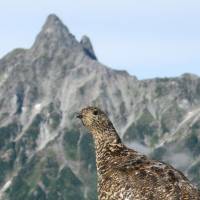
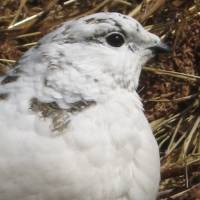















With your current subscription plan you can comment on stories. However, before writing your first comment, please create a display name in the Profile section of your subscriber account page.